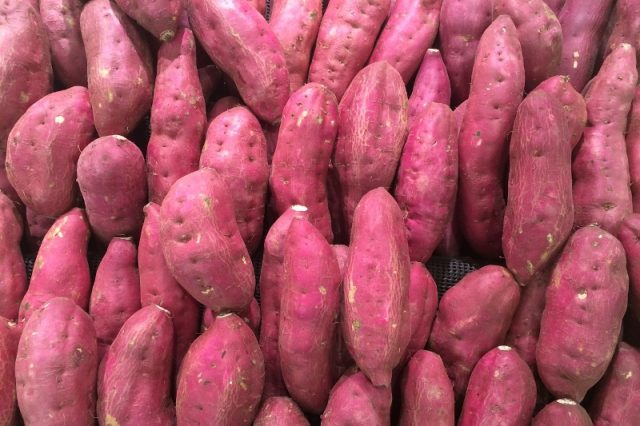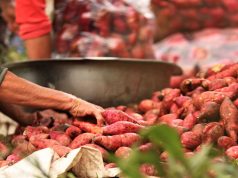The Department of Science and Technology recently informed Filipinos that the English translation of the popular crop “kamote” is “sweetpotato.”
Filipinos, however, disagreed with how the word is spelled.
In a post on February 5, DOST’s Philippine Council for Agriculture, Aquatic and Natural Resources (DOST-PCAARRD) advised that the English translation of the plant is written as “sweetpotato” and not “sweet potato.”
It also said that the crop has been among its staples or subjects for research and development.
“Kamote is sweetpotato!” DOST-PCAARRD said.
“This popular Pinoy crop has been one of DOST-PCAARRD’s research and development staples. Study results on this were published and are made available via the PCAARRD eLibrary,” it added.
Publications about sweet potatoes can be viewed on the agency’s own eLibrary.
To use the platform, users can watch a short video clip on how to access it for free on this link.
The social media post soon gained traction with 2,800 reactions and 2,500 shares on Facebook.
Most of the reactions were also positive with 1,100 likes, 903 shock emojis and 747 heart emojis.
Some Filipinos, however, countered this information.
They cited Google, Merriam-Webster and online dictionaries as among the references that prescribe the term “sweet potatoes” as two words.
“Tried to Google it sweetpotato with no space but still the result there is space. Sino ba mas tama si Google po ba mali?” a Facebook asked.
“Merriam-Webster, Collins, Lexico by Oxford, Oxford Learner’s, and Britannica disagree,” another Facebook user commented.
If you type “sweetpotato” on Google’s search bar, it will give you results of the term spelled with a space in-between.
The page will also ask you if you are referring to the conventional sweet potato.

Some of the publications of DOST are spelled “sweet potato” and “sweetpotato.”
One Facebook user explained that both spelling styles are correct.
“Both terms are correct though. It’s only a matter of style or preference. As one commented here, some organizations (typically related to the crop) promote the word ‘sweetpotato’ but mainstream English (esp. or at least American English) prefers ‘sweet potato’,” the user said.
Another user pointed out that an organization called the International Potato Center (CIP) also prefers to use the one-word version.
The CIP is a Peru-based research development center that focuses on potatoes, sweet potatoes and andean roots and tubers.
“DOST-PCAARRD is right. This is according to the International Potato Center,” the online user said.
On its website, the CIP explained that the single-word term for kamote is used to differentiate the plant from the Irish potato.
“Using the single-word term helps differentiate the sweetpotato from the white or Irish potato, which is a tuber, not a root, and which possess a different nutrient profile,” the CIP said.
It also stressed the need to differentiate sweet potatoes from yams.
“Differentiation also matters when it comes to separating sweetpotato from yams, another vegetable with which it is commonly confused. Aren’t sweetpotatoes synonymous with ‘yams’? Aren’t all roots and tubers with orange- or red-colored colored flesh genetically related? Indeed they are not,” the CIP said.






